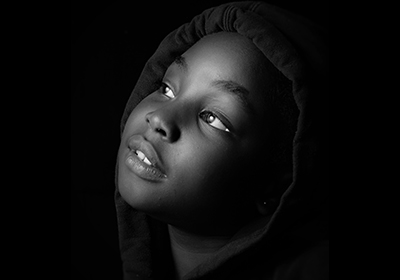
Author: Julie Kiefer, julie.kiefer@hsc.utah.edu

While COVID-19 has wreaked havoc across the board, Black communities are among those that have been hit disproportionately hard. The effect is a recent manifestation of a pervasive problem of health inequities that extend to all aspects of medicine, including treatment for autism.
Compared to White children, Black children with autism are less likely to get the interventions they need. All too often, they are initially misdiagnosed with conditions like ADHD or conduct disorder or go undiagnosed, explains Michele Villalobos, PhD, an associate professor of pediatrics at University of Utah Health who specializes in autism spectrum disorders.
These differences in care are compounded by a system not designed with Black parents of children with autism in mind. As a result, these parents often have difficulty finding or accessing support services. At a deeper level, race-based trauma stemming from historical events in medicine and research impacts the Black community’s trust in medical care.
“My grandmother died from high blood pressure right before we realized the research was wrong on treating blood pressure in Black folks. The default person is the White male,” said a member of the Black community who was asked about their view of research and health care. “We are different, we live different, we process different. No one cares, so we keep dying.”
The Power of Peer Support
The Color of Autism Foundation is a nonprofit organization that created its own intervention in order to change the picture for Black children with autism. A recent study published in the academic journal Autism demonstrates how the Foundation’s training program for parents, called Spectrum of Care, was developed by the Black community for the Black community and helped fill unmet needs.
“Autism interventions are not designed for, or tested in, the Black community,” says Villalobos, a co-author of the study led by Kim Kaiser, director of programming at The Color of Autism, and Brian Boyd, PhD, an associate professor of applied behavioral science at the University of Kansas. “The Color of Autism sought to change that.”
Over the course of six training sessions, Black parents learned how to assess their own needs, navigate medical and professional services, and create a circle of support with relatives, friends, people in their community, and beyond. In combination with peer coaching, taking these steps helped them understand how to advocate for their children and themselves.
“Autism interventions are not designed for, or tested in, the Black community.”
A unique attribute of the program, called Spectrum of Care, was that it was created and facilitated by Black parents of children with autism who are certified as peer-support specialists. With similar life experiences and a shared understanding of the historical and continuing trauma that Black communities face, parent participants could relate to and trust program leaders. The facilitators, in turn, could offer culturally grounded solutions that made sense in the context of these parents’ lives.
“You helped me calm my fear, use my voice, and advocate for my child,” one participant wrote. “I was alone in spaces where no one understood the fear…Now I am not afraid, and I have a plan, resources, and confidence.”
According to surveys with 138 parent participants, Spectrum of Care helped parents feel empowered and engaged. As many as 88 percent felt more confident being advocates in situations when there was bias or racism, 78 percent had begun applying skills learned in the program, 76 percent felt empowered to advocate for their child, and 92 percent gave the program its highest rating.
Following a Community’s Lead
To Villalobos, the program’s success shows a need to acknowledge that interventions developed in the lab won’t work for everyone. “Sometimes we have to start with what already exists within a community,” Villalobos says. The next step, she adds, is to better understand the “key ingredients” of Spectrum of Care. “We also must work harder to truly collaborate with the communities doing the grassroots work, learn what they have done right, and train health care providers to emulate those key elements.”
Clearly, a “one size fits all” treatment isn’t working, she and the other authors of the study point out. Can researchers and doctors find ways to increase trust and engagement with the Black autism community? Can they teach parents how to develop a circle of support that goes beyond health care? They say that taking cues from community practices that work could improve outcomes for children and parents over the long term.
“We need to acknowledge that just because we as health care providers and scientists have more education, we are not the experts in everything, especially in the area of health equity,” Villalobos says. “We have to involve our communities, acknowledge their expertise, and develop interventions alongside them.”